

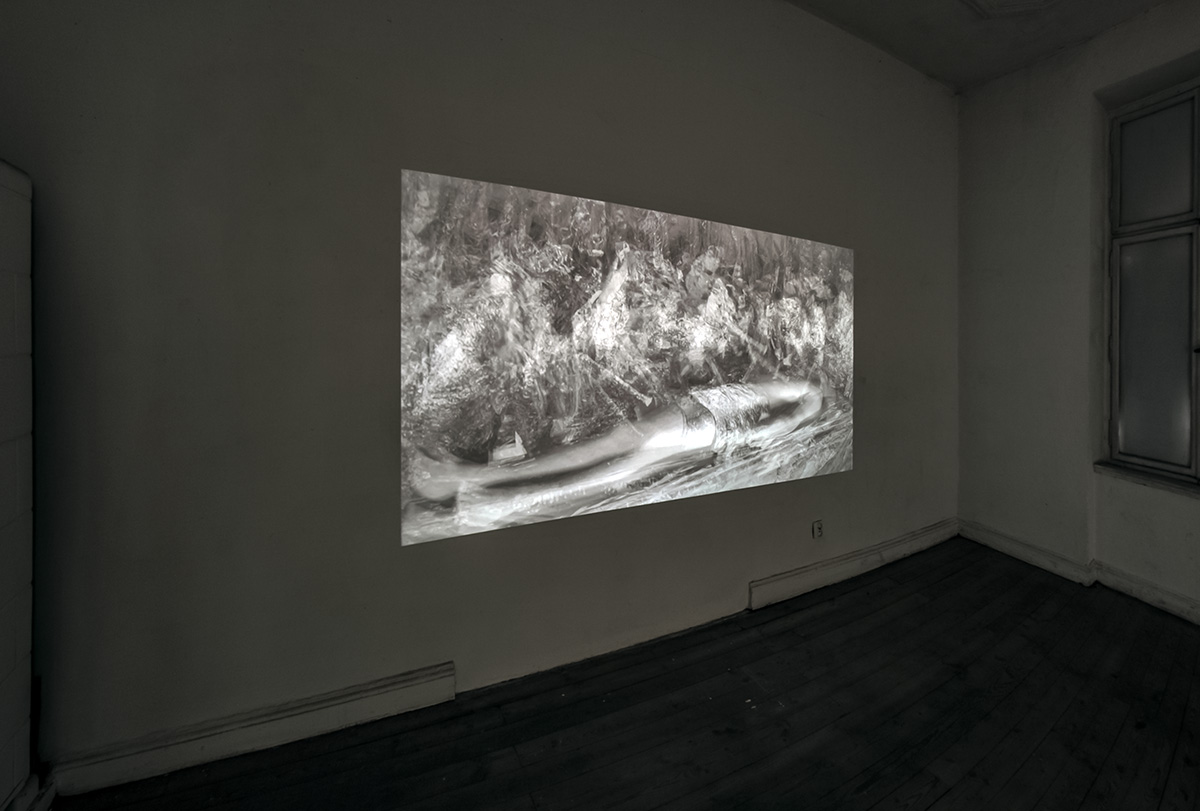
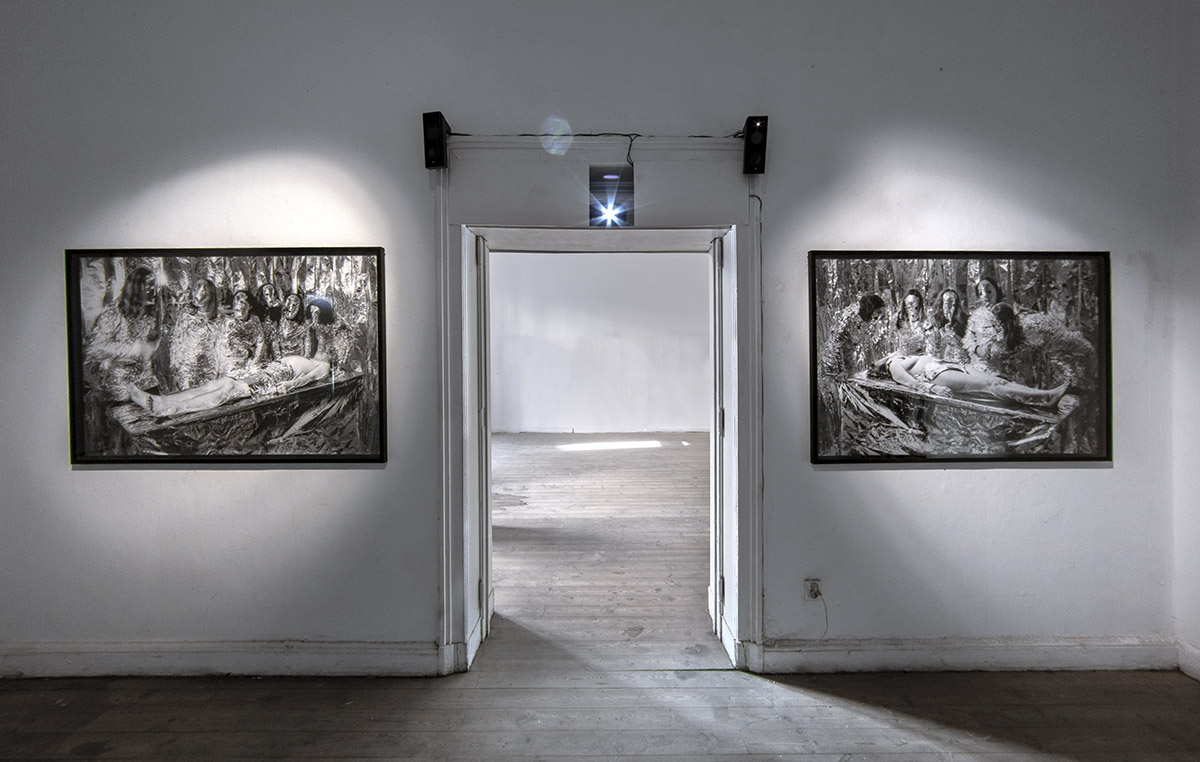
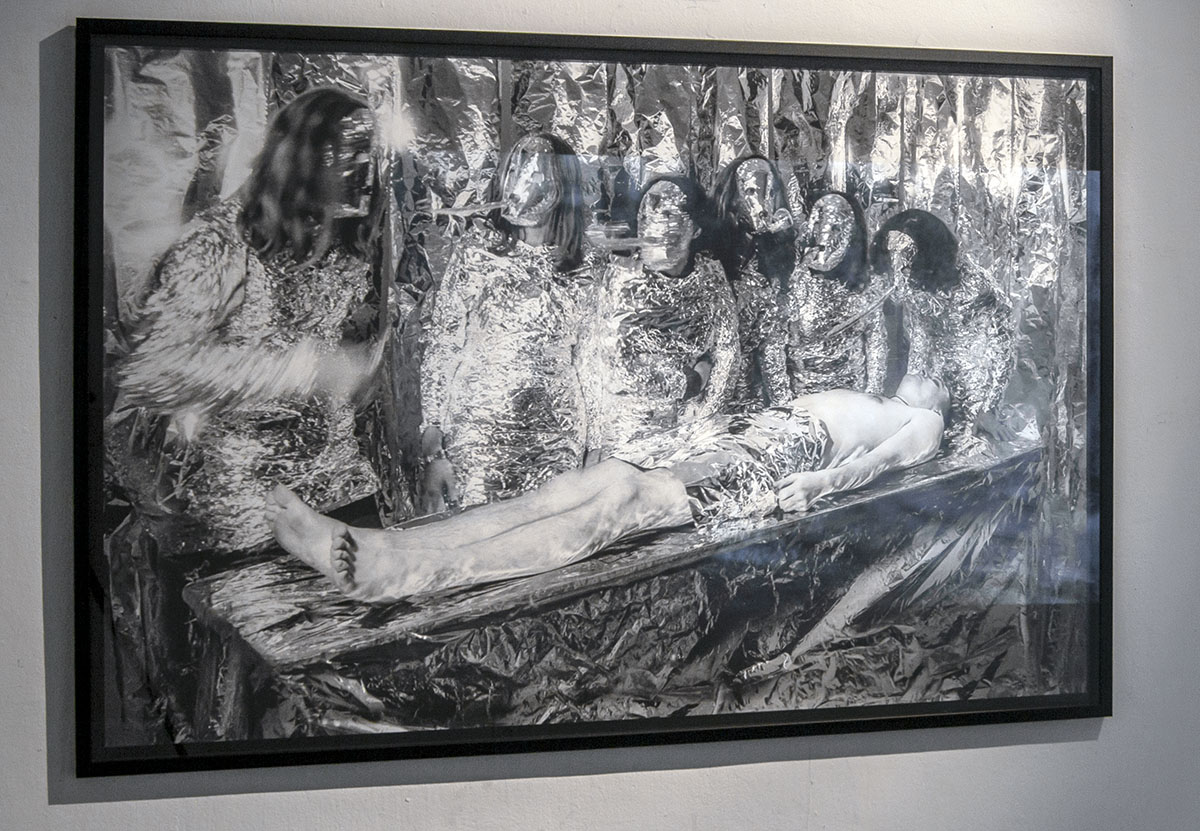
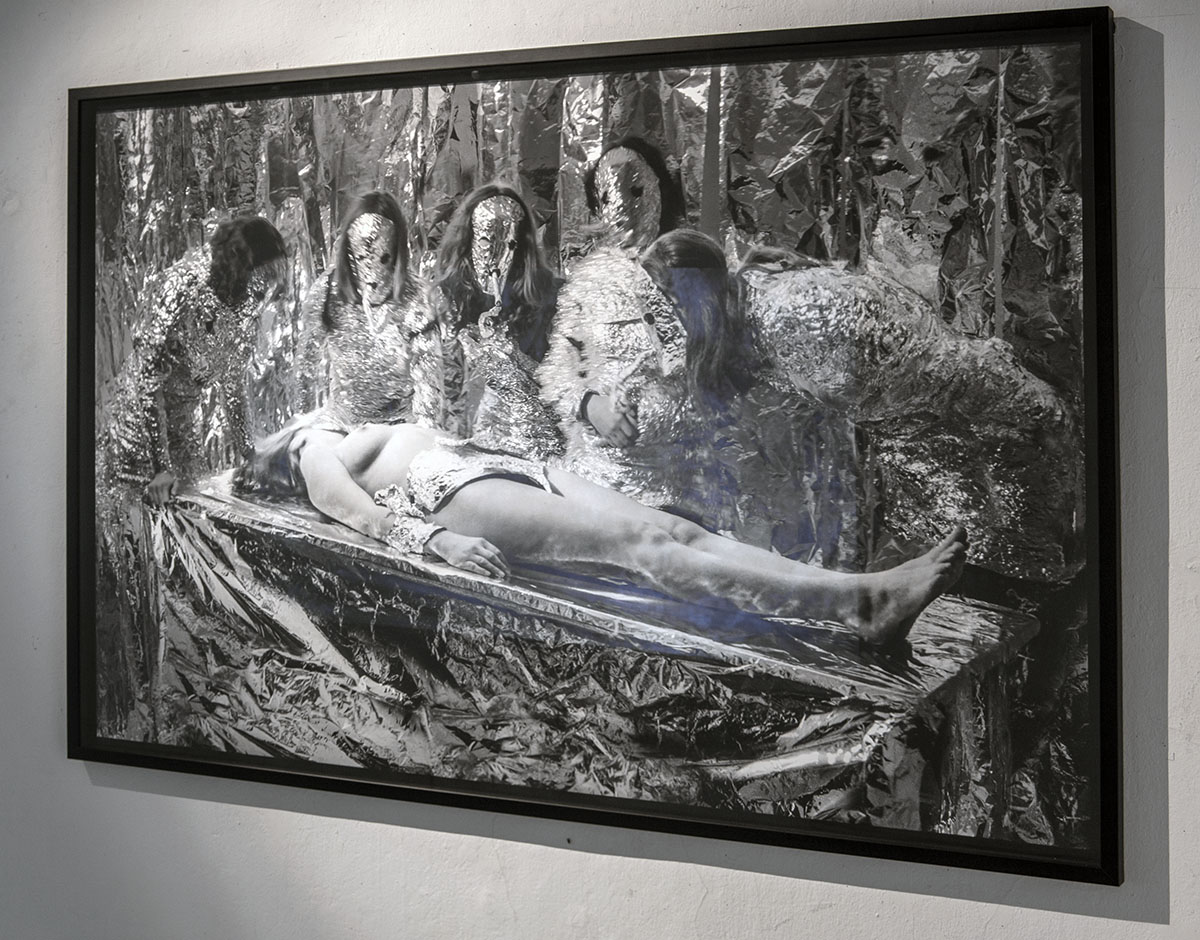
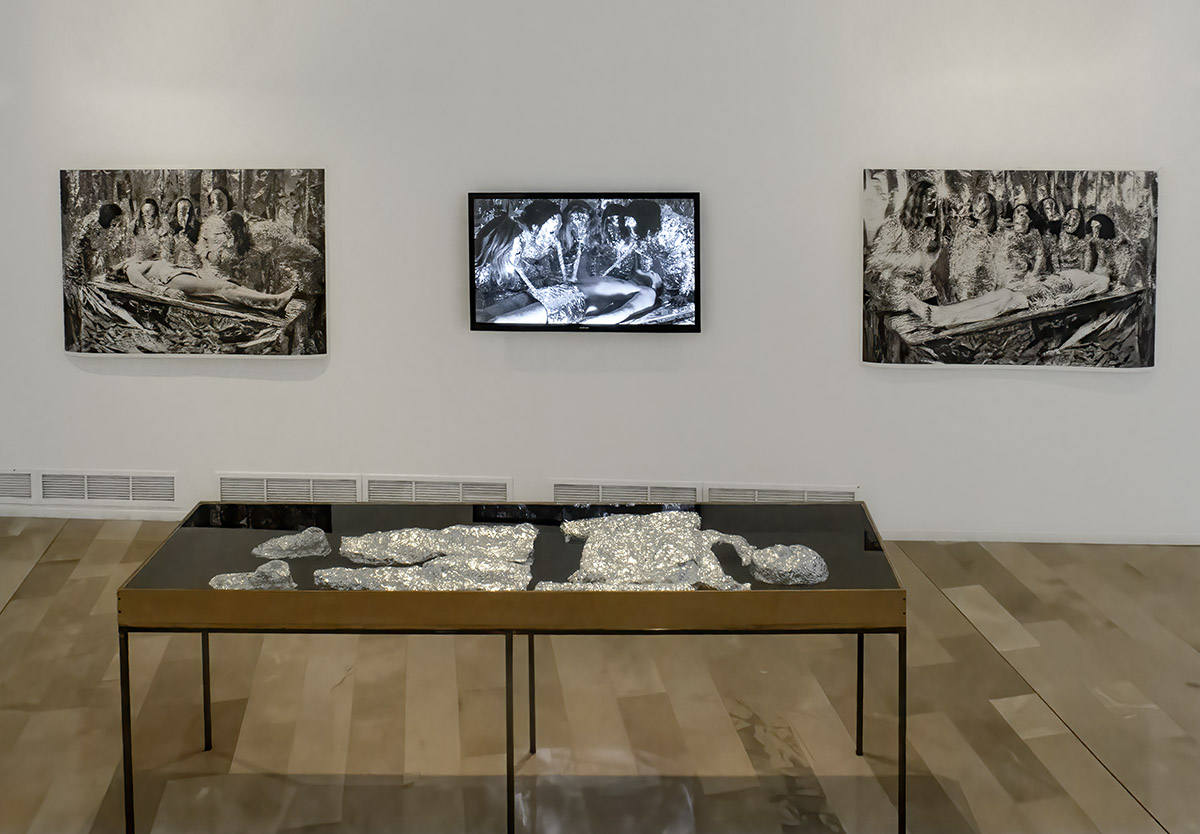
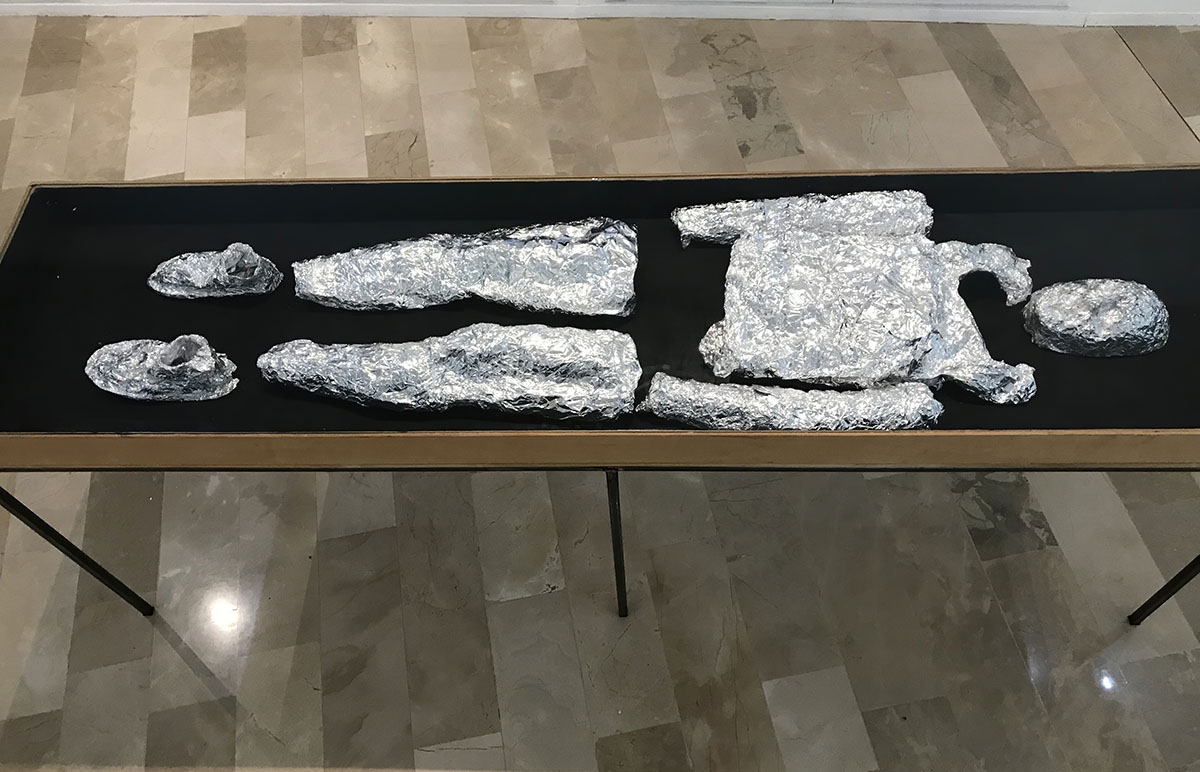
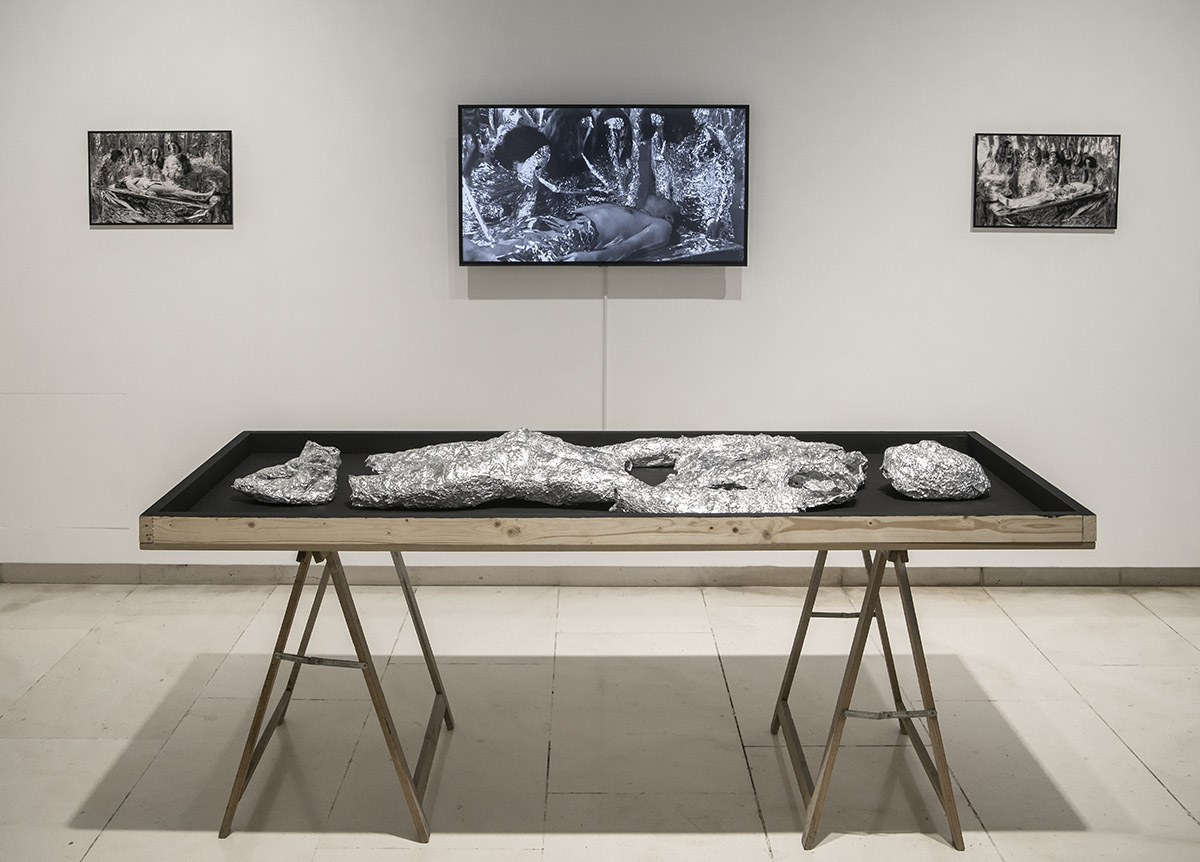
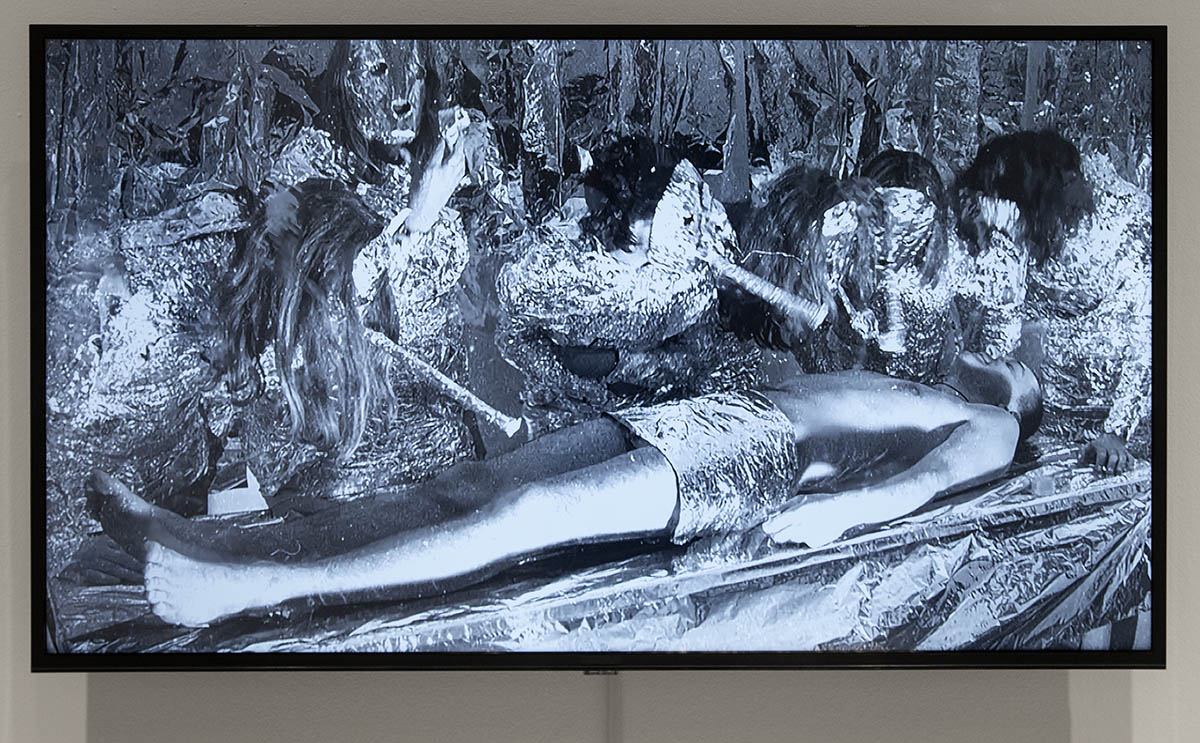
Histerium
Video loop: 2:30”
Photos: Digital print on photo paper, 150 x 100 cm
Showcase: Fake traditional dress used in the rites of Hysterium made out of alluminum.
Wschodnia Gallery, Lodz, Poland, Museo Arqueológico y de Arte Contemporáneo, Guayaquil, Ecwador, Museo Castillo de Mata, Las Palmas, Spain, 2020-2021
Mystery - one of the basic types of medieval liturgical drama and the spectacle based on it. Hysteria - a former term for disorders that can now be classified as dissociative disorders, conversion disorders, but mainly various types of neurotic disorders that are caused by unjustified fears.
The title of the work is a combination of the two notions of mystery and hysteria. Mysteries, especially in the Middle Ages, referred to the mystery in the presentation of scenes of religious worship, they were symbolic and allegorical, and the individual scenes had no cause and effect connections. Hysteria has a much longer history, dating back to ancient Egypt, referring to neurotic disorders. The photographic and video works present a kind of mystery that is difficult to describe in a clear way. We can freely move from associations with Rembrandt’s Anatomy Lesson to the mysterious mysteries of an unspecified cult, an attempt to unravel the cause of death or an attempt to bring the victims of pandemic times back to life or health. The fight against an invisible deadly germ, through its chaotic nature and an attempt to save as many lives as possible, seems to be a tragicomic dance - a mysterious mystery symbolically describing the surrounding reality.
- Home
- Artists Info
- Recent Works
- Life on Mars-Slana Camp
- PARTI-cipation X
- End of Eternity
- Burning Structure
- Two of a Kind
- Reef
- Histerium
- Two Weddings...
- For a Moment
- COVID Family
- Salon Disaster
- Travel Agency
- Broken Structure 2
- Napalm Travel
- Like My Father
- Kaputal
- Trash
- Mañana
- Not Quite Right
- Ghost House
- Broken Structure
- In Front of Eyes
- Blow Up
- Fortress Europe
- Ghetto XXI
- Indoor
- Outdoor
- Objects
- Photo/Video
- CV